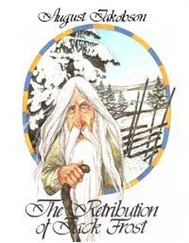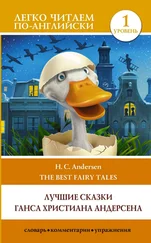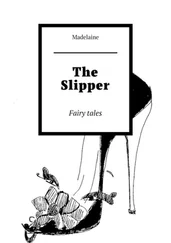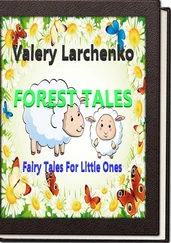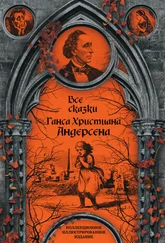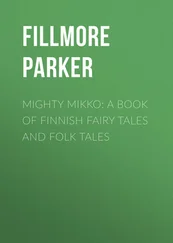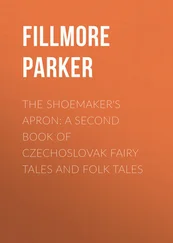Ганс Андерсен - Fairy Tales
Здесь есть возможность читать онлайн «Ганс Андерсен - Fairy Tales» весь текст электронной книги совершенно бесплатно (целиком полную версию без сокращений). В некоторых случаях можно слушать аудио, скачать через торрент в формате fb2 и присутствует краткое содержание. Жанр: Старинная литература, на английском языке. Описание произведения, (предисловие) а так же отзывы посетителей доступны на портале библиотеки ЛибКат.
- Название:Fairy Tales
- Автор:
- Жанр:
- Год:неизвестен
- ISBN:нет данных
- Рейтинг книги:4 / 5. Голосов: 1
-
Избранное:Добавить в избранное
- Отзывы:
-
Ваша оценка:
- 80
- 1
- 2
- 3
- 4
- 5
Fairy Tales: краткое содержание, описание и аннотация
Предлагаем к чтению аннотацию, описание, краткое содержание или предисловие (зависит от того, что написал сам автор книги «Fairy Tales»). Если вы не нашли необходимую информацию о книге — напишите в комментариях, мы постараемся отыскать её.
Fairy Tales — читать онлайн бесплатно полную книгу (весь текст) целиком
Ниже представлен текст книги, разбитый по страницам. Система сохранения места последней прочитанной страницы, позволяет с удобством читать онлайн бесплатно книгу «Fairy Tales», без необходимости каждый раз заново искать на чём Вы остановились. Поставьте закладку, и сможете в любой момент перейти на страницу, на которой закончили чтение.
Интервал:
Закладка:
THE STORY OLD JOHANNA TOLD (HVAD GAMLE JOHANNE FORTALTE, 1872)
Composed between September 16 and September 24, this fairy tale was the last Andersen ever wrote. The first English translation, with the title “The Story Old Joan Told,” appeared in Aunt Judy’s Christmas Volume, 1873. It was based on a tale that Andersen had heard during his youth from an old woman. Andersen had been struck by the appearance of an old withered man, and the old woman told him the tale about the boiling pot with a special brew that a wise woman could use to bring a young man back from foreign lands to his sweetheart, no matter how far he had traveled. The only difficulty was that the brew often caused the young man to become decrepit. In Andersen’s version of the story he transforms the young tailor, who is a man without faith in God, and it is this lack of faith that brings about his downfall.
SHE WAS NO GOOD (HUN DUGDE IKKE, 1853)
This tale was Andersen’s endeavor to portray his mother, who was an alcoholic, in a positive light and to transform her story into a parable of religious salvation. Andersen’s relationship with his mother was fraught with contradictions. He barely mentions her in his diaries and was evidently filled with shame because of her low social status and her drinking.
THE ANTHROPOMORPHIZING OF ANIMALS AND NATURE
THE UGLY DUCKLING (DEN GRIMME ÆLLING, 1844)
One of Andersen’s most successful tales, “The Ugly Duckling” is not only a clear autobiographical narrative of his rise from rags to riches and a wish-fulfillment story that captures the deepest psychological wishes of powerless children; it is also a remarkable example of the animal fable with a clear moral. In Andersen’s narrative the path to survival and success is ironically tied to Darwin’s notion of the survival of the fittest. Though Andersen was opposed to Darwin’s theories, his tale demonstrates that there are species in the animal world that are more adapted to survival and more beautiful than others. Andersen implies that faith in one’s true self will lead to happiness and thus aligns himself with the philosophy of essentialism. His essential identity was noble, and his nobility was a nobility of the soul and the true artist. Once this tale became famous, Andersen often identified himself as the ugly duckling.
Originally this tale was to be called “The Swan Chick,” but Andersen changed the title so there would be an element of surprise when the so-called duckling changes into a swan.
IN THE DUCKYARD (I ANDEGAARDEN, 1861)
This grim tale uses the proud and haughty Portuguese hen to comment on snobbery and the survival of the fittest. It can be regarded as a counter-tale to “The Ugly Ducking.” The story also is apparently a tale of revenge. Andersen often used animals to satirize people he knew. In this case, the rooster and the Portuguese hen clearly represent people he detested, but scholars have not been able to identify them.
THE STORKS (STORKENDE, 1839)
In this tale, based on the superstitious belief that storks bring babies, Andersen provides an ironic moral twist to criticize the cruelty of children. Several of Andersen’s stories include the stork, his favorite bird.
THE SPRUCE TREE (GRANTRÆET, 1845)
This powerful parable, which deals with the vain pursuit of fame, may reflect some of Andersen’s personal concerns as he desperately tried to become famous. More than that, the tale is a perfect allegory about misguided notions of celebrity, and its initial light tone turns cynical in the end. In addition to attempting to expose the artificiality and superficiality of the upper classes, Andersen tried to show how gullible people might be caught up in the false glow of fame.
IT’S PERFECTLY TRUE! (DET ER GANSKE VIST! 1852)
This ironic tale is a delightful comic commentary on how rumors spread and return to haunt the people who start them.
THE DUNG BEETLE (SKARNBASSEN, 1861)
This tale was inspired by a statement Charles Dickens published in his magazine Household Words: “When the Emperor’s horse got his golden shoes, the beetle also stretched his leg out.” Dickens recommended that Andersen write a story based on this Arabian proverb, and this satirical tale about a pompous beetle was the result. Andersen thought that Dickens had written the passage. However, it was part of a series of proverbs compiled by Dickens’s co-editor Richard H. Horne.
THE BUTTERFLY (SOMMERFUGLEN, 1861)
This tale, first published in Folkekalender for Danmark, was conceived in Switzerland during a trip Andersen made in August 1860 and was completed in Slagelse, Denmark, while he was staying at Basnaes Manor, in November. There is a good deal of self-irony in this story, in which a choosy butterfly ends up as a lonely bachelor.
THE SNOWDROP (SOMMERGÆKKEN, 1863)
This tale was first published in Folkekalender for Danmark and was written in response to a request by Andersen’s friend Adolph Drewsen, who complained about how traditional names were constantly being changed. Drewsen pointed out that “sommergæk” (summer fool) had been changed to “wintergaek” (winter fool) and that the name of the flower had thus lost its significance. As a response, Andersen wrote a tale about teasing and flirting.
THE SUNSHINE’S STORIES (SOLSKINS-HISTORIER, 1869)
This tale, a light parody of optimistic stories, was first published in English in The Riverside Magazine for Young People (1869); it was published later the same year in the book Fra Nordiske Digtere ( From Nordic Poets). Andersen wrote the tale after he heard Mozart’s Die Zauberflöte ( The Magic Flute, 1791). The motif of the fortunate gift at birth is one Andersen used in several of his tales.
THE DROP OF WATER (VANDDRAABEN, 1847)
This terse and bitter tale—dedicated to the famous Danish physicist and chemist Hans Christian Ørsted, who wrote the book The Spirit in Nature (1850)—is an ironic commentary on the way humans in a large city behave like animals. The tale, part of A Christmas Greeting to My English Friends, appeared in English before it was published in Danish. Andersen had first viewed microscopic creatures when he visited botanist Niels Hofman-Bang in 1830. He also may have been influenced by reading a description of creatures present in a drop of water in Edward Bulwer-Lytton’s Night and Morning (1841).
THE FLEA AND THE PROFESSOR (LOPPEN OG PROFESSOREN, 1873)
This comic tale was published in Folkekalender for Danmark and in Scribner’s Monthly (April 1873). The influence of Jules Verne, French author of Cinq semaines en ballon ( Five Weeks in a Balloon, 1863) whom Andersen admired, is clear in this tale in the reference to hot-air balloons. He was also inspired by French politician Léon Gambetta, who during the Franco-Prussian War escaped besieged Paris in a balloon and fled to Tours. Andersen often developed real incidents into fantastic stories that are related to science fiction.
THE SNOWMAN (SNEEMANDEN, 1861)
Andersen wrote this tale during the Christmas holidays in 1860 on a visit to Basnaes Manor near Slagelse, where he often stayed; the setting is based on that locale. The story, which contains a good deal of self-irony, reflects Andersen’s concern about the transient nature of all living things.
THE HUMANIZATION OF TOYS AND OBJECTS
THE STEADFAST TIN SOLDIER (DEN STANDHAFTIGE TINSOLDAT, 1838)
Читать дальшеИнтервал:
Закладка:
Похожие книги на «Fairy Tales»
Представляем Вашему вниманию похожие книги на «Fairy Tales» списком для выбора. Мы отобрали схожую по названию и смыслу литературу в надежде предоставить читателям больше вариантов отыскать новые, интересные, ещё непрочитанные произведения.
Обсуждение, отзывы о книге «Fairy Tales» и просто собственные мнения читателей. Оставьте ваши комментарии, напишите, что Вы думаете о произведении, его смысле или главных героях. Укажите что конкретно понравилось, а что нет, и почему Вы так считаете.

![Ганс Андерсен - Ганс Чурбан[другой перевод]](/books/95480/gans-andersen-gans-churban-drugoj-perevod-thumb.webp)

